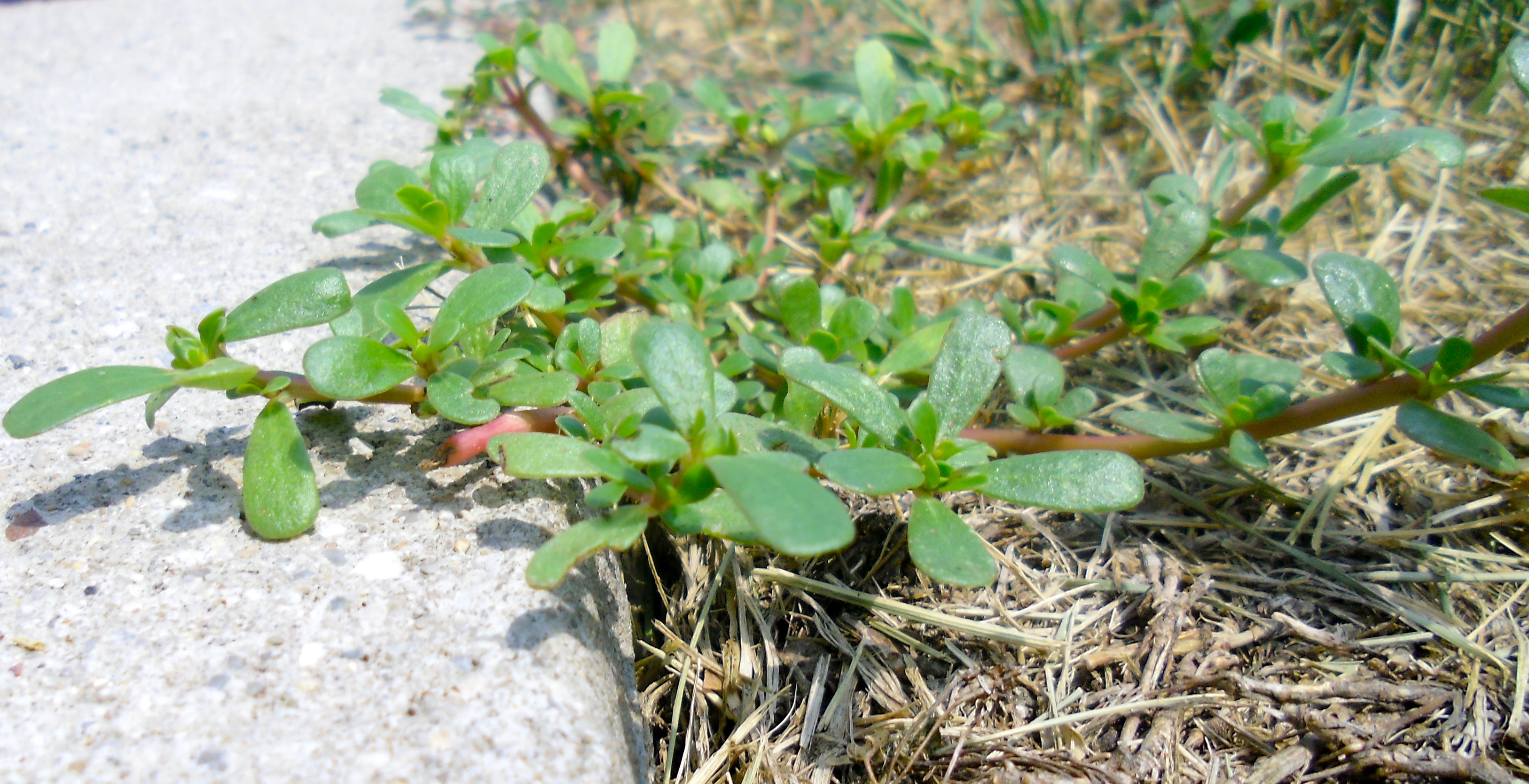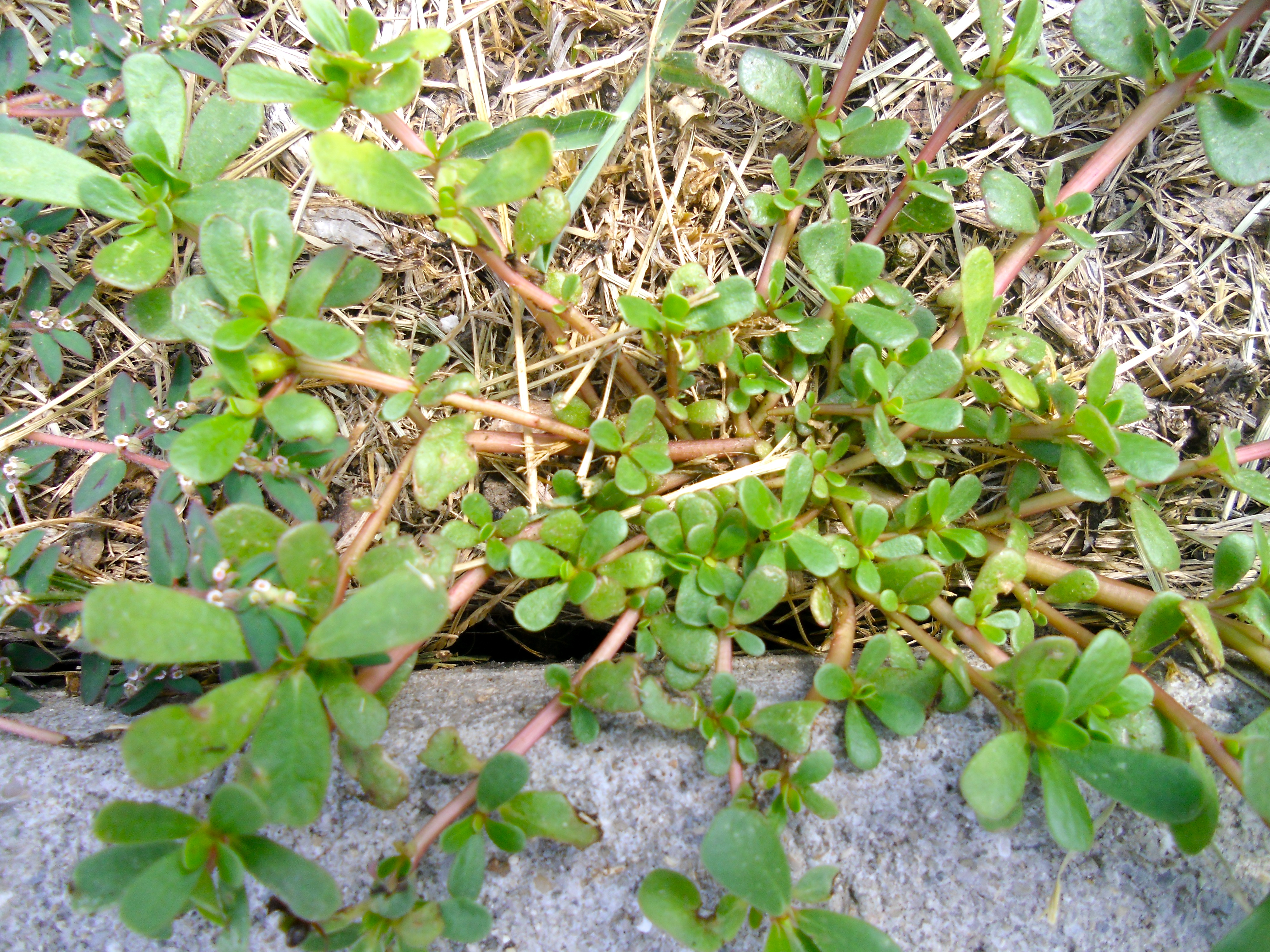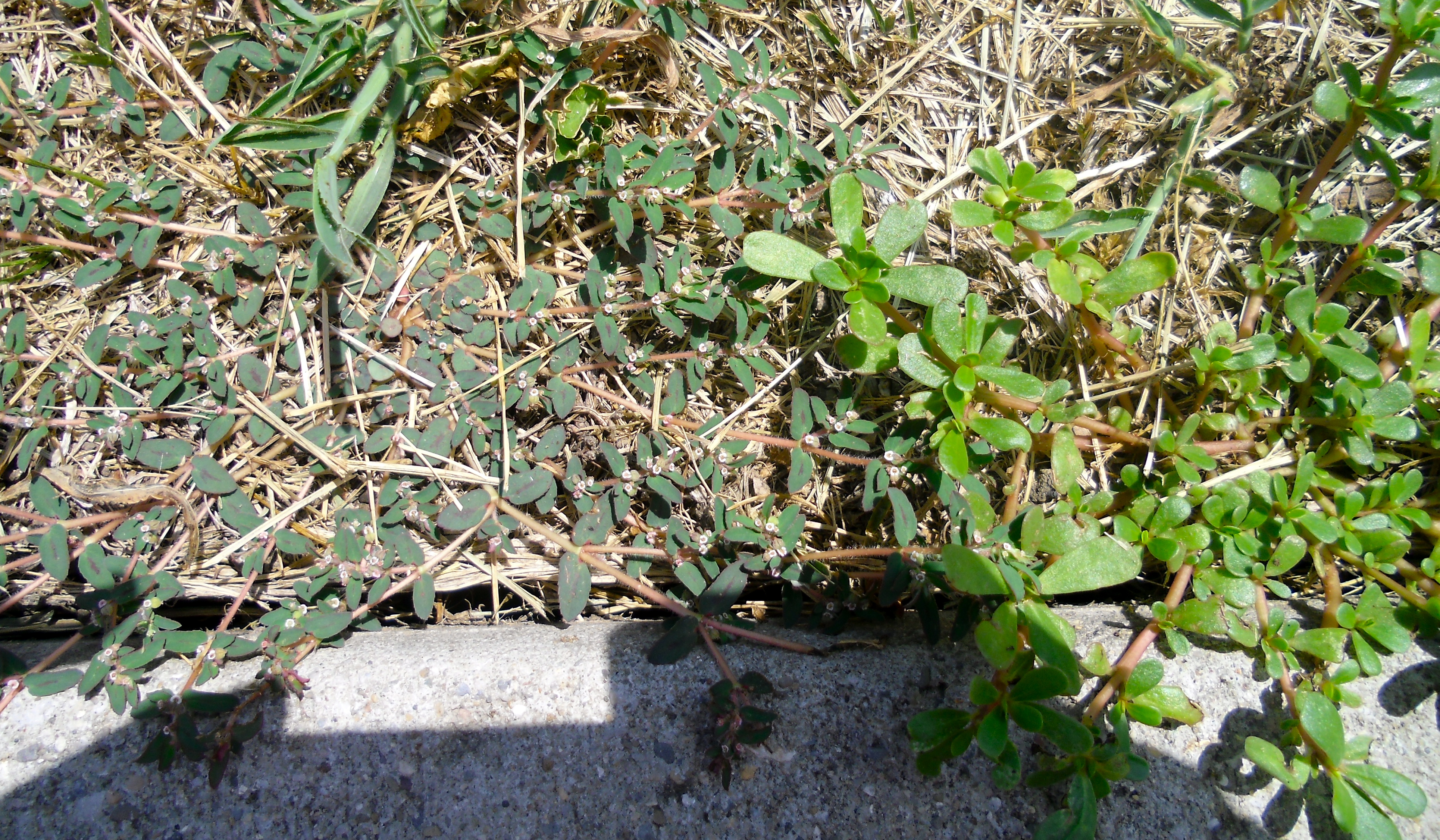Purslane
While, apparently, not one of the more sought-after wild plants—or even that well known in North America—purslane is a popular food in the Mediterranean and many other areas of the world. Look for purslane in open, sunny areas as it is a warm weather lover, not sprouting until the ground temperature reaches around 80 degrees F, yet very determined once established and flourishing with ease.
Purslane’s tear-drop shaped leaves (though they remain rounded, not quite reaching a ‘tear drop’ point where the leaf meets the stem and are typically no longer than 1 inch in length) are green with a hint of red, first sprouting as four propeller-looking leaves out of a reddish system of stems that resemble pipes stretching across the ground. The plant rarely reaches more than 2 or 3 inches in height.
Purslane is a succulent—a plant which has fleshy, water-storing leaves or stems. In extreme cases of drought, the stems of the plant will pull water back in from the leaves and drop them. With the way that it spreads across the ground, purslane has the look of a plant that would root at each node, yet it doesn’t. Much like a starfish, however, it does grow new plants from cut segments, granted that the soil conditions are ideal.
This plant’s hardiness, along with this ability to grow new plants from chopped up pieces make for an unruly task for those trying to eliminate its presence from garden space or farmland…and a delight for wild-food enthusiasts.;)
It is fairly easy to identify purslane based on its leaves and stems, alone. For those who wanting an extra identifier, the plants do produce flowers once they reach a certain age. The flowers are tiny (less than 1/4 of an inch), are usually yellow in color, 5-petaled and found on older growth. The tiny black seeds are barely larger than grains of salt.
Nutritionally, purslane is potent! It tops the list for quality amounts of vitamin E and contains an impressive amount of omega-3 fatty acids, which is unusual for a plant. I have read that purslane contains up to 4000 ppm of the omega-3 fatty-acid alpha linolenic acid. For those who take fish or flax oil supplement, purslane could offer up a nice alternative during the summer months while saving money in the process. Purslane contains glutathione, is rich in vitamin C, calcium, magnesium, riboflavin, potassium and phosphorus, and has an iron content comparable to spinach.
With a mild, very slight hint of sour flavor and chewy texture, purslane leaves and stems are edible raw and make a fantastic addition to salads. After rinsing, you can steam or add them to soups, stir-frys or other veggie dishes.
**Be mindful of spurge, a similar-looking, poisonous plant that can grow near purslane. The leaves of spurge usually grow in a pair across from each other on the stem, which is not as thick as purslane’s stem, and gives off a white, milky sap when you break it. If careless, it would not be difficult to toss some in your bag while out scouting for purslane.
Purslane Potato Salad
6 medium red potatoes, cooked and cubed
3 cups purslane, washed and chopped
4 scallions, sliced
2 celery stalks, sliced
4 tbsp. homemade mayo, blended nut-based cream or simply any cold-pressed oil
2 tbsp. dijon mustard
sea salt and pepper to taste
Wash and chop all ingredients. Mix together in a bowl with mayo, cream or oil of choice. Add in seasonings to desired taste. Chill until ready to be served. (can garnish with fresh dill sprigs.)
*blending nutrient-dense leafy greens with antioxidant and water-rich fruits into a ‘green smoothie’ is an easy and incredible way to boost your health and vitality…
Purslane & Plum Smoothie
1 head of red leaf lettuce
1 bunch chard leaves
2 cups purslane, washed
4 black or red plums, pits removed
1 cup mixed berries
1/2 avocado
stevia, to taste
Add just enough water to blend until smooth & Enjoy!
**spurge alongside purslane. notice how the leaves of spurge grow opposite each other, and the difference in shape and color—the reddish center of each spurge leaflet. when you break the stem of spurge, it emits a milky-white latex.
(organic lifestyle & village voice, 2011)


